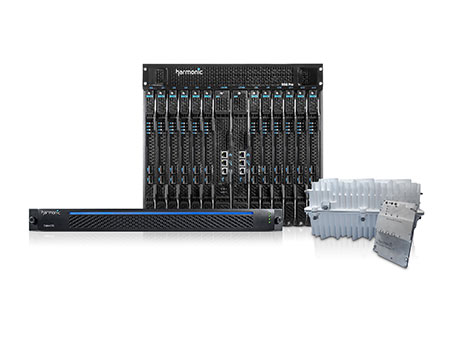Three Ways That Harmonic CableOS™ Fundamentally Changes the Economics of Operating a Cable Access Network

With the rising demand for high-speed broadband services such as OTT streaming, video on demand, time-shift TV and cloud DVR, the future has never been brighter for cable operators. Adding these capabilities is essential to a cable operator’s business growth, but the associated requirements for real estate and power and cooling costs can be prohibitive. Moreover, a traditional cable delivery infrastructure rooted in hardware lacks the agility needed to launch new services quickly and cost-effectively, due to the time and expense required to add the necessary equipment and capacity.
To maintain a competitive edge, cable operators need a simpler, faster way to add capacity. The solution must be efficient and scalable, resolving operators’ space and power constraints in the headend and hub while simplifying future upgrades.
Recently, Harmonic introduced CableOS™, the industry’s first software-based Converged Cable Access Platform (CCAP). Featuring software-based Cable Modem Termination System (CMTS) running on an off-the-shelf, 1-RU Intel® server, the first end-to-end Remote PHY system, and leading RF port density, CableOS provides cable operators with three major benefits.
Substantial Cost Savings
A single CableOS Core server offers a quantum leap forward in its ability to support tens of gigs of capacity and multiple service groups in fewer rack units when compared with traditional hardware CMTS implementations.
While hardware-based CCAPs typically require nine racks of equipment to support 80 service groups, CableOS allows operators to support more than 250 service groups in just four racks — a 7X density difference! With CableOS, operators can reduce space and power costs by up to 75 percent in a centralized CCAP deployment, or by more than 90 percent in a Remote PHY deployment – resulting in significant CAPEX savings.
In addition to the space and power savings associated with moving RF components out of the headend and into the field, decoupling the CCAP core from the PHY in a Remote PHY architecture enables operators to leverage the benefits of digital fiber, such as signal transport over much longer distances and more wavelengths.
The smarter way to stay on top of the multichannel video marketplace. Sign up below.
Greater Agility
As a software-based solution, CableOS leverages COTS Intel processor-based servers to provide operators will all of the advantages associated with IT economics and Moore’s Law. With CableOS, regular software upgrades accelerate the introduction of new features, such as high-layer DOCSIS 3.1 capabilities. Operators no longer need to purchase space-consuming, power-hungry and expensive hardware-based CMTS platforms, and can break away from the cycle of needing to upgrade hardware every few years to accommodate capacity growth requirements.
Unprecedented Scalability
CableOS delivers the ability to efficiently scale up capacity and service groups over time, as well as supporting a range of sites, from the smallest to the largest. Operators can instantly grow their infrastructure from supporting a few service groups to more than a hundred on a single CableOS server. Capacity is gained simply by adding additional 1-RU servers.
CableOS: The Latest Innovation in Cable AccessInfrastructure
For operators wanting sustainable capacity growth over the long term, CableOS is the solution, enabling the migration to multi-gigabit broadband capacity and the fast deployment of DOCSIS 3.1 data, video and voice services.
A short video on CableOS, as well as a solution brief is available at www.harmonicinc.com/solutions/software-based-ccap. Further information about Harmonic is available at www.harmonicinc.com.
